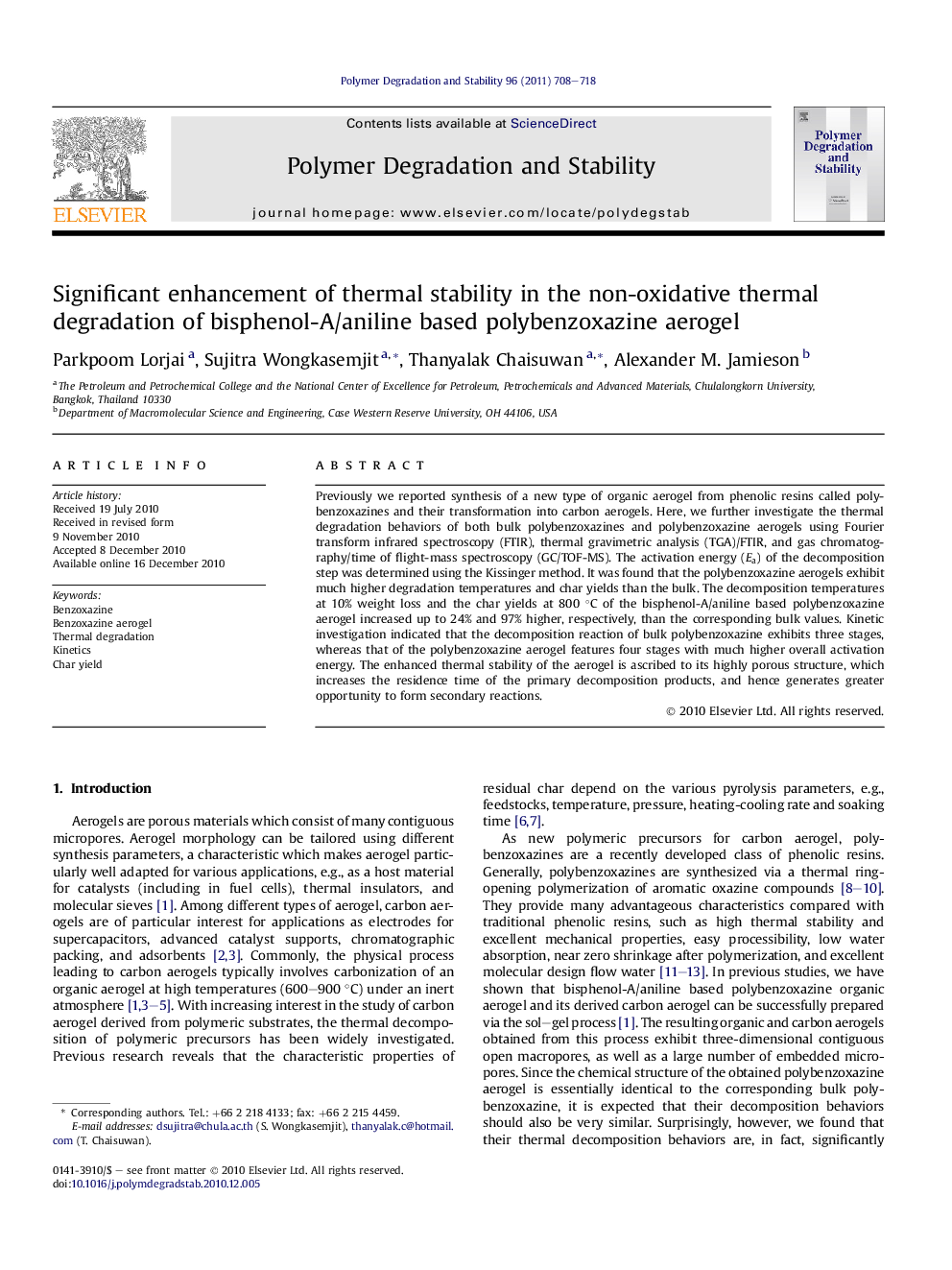| Article ID | Journal | Published Year | Pages | File Type |
|---|---|---|---|---|
| 5202928 | Polymer Degradation and Stability | 2011 | 11 Pages |
Abstract
Previously we reported synthesis of a new type of organic aerogel from phenolic resins called polybenzoxazines and their transformation into carbon aerogels. Here, we further investigate the thermal degradation behaviors of both bulk polybenzoxazines and polybenzoxazine aerogels using Fourier transform infrared spectroscopy (FTIR), thermal gravimetric analysis (TGA)/FTIR, and gas chromatography/time of flight-mass spectroscopy (GC/TOF-MS). The activation energy (Ea) of the decomposition step was determined using the Kissinger method. It was found that the polybenzoxazine aerogels exhibit much higher degradation temperatures and char yields than the bulk. The decomposition temperatures at 10% weight loss and the char yields at 800 °C of the bisphenol-A/aniline based polybenzoxazine aerogel increased up to 24% and 97% higher, respectively, than the corresponding bulk values. Kinetic investigation indicated that the decomposition reaction of bulk polybenzoxazine exhibits three stages, whereas that of the polybenzoxazine aerogel features four stages with much higher overall activation energy. The enhanced thermal stability of the aerogel is ascribed to its highly porous structure, which increases the residence time of the primary decomposition products, and hence generates greater opportunity to form secondary reactions.
Related Topics
Physical Sciences and Engineering
Chemistry
Organic Chemistry
Authors
Parkpoom Lorjai, Sujitra Wongkasemjit, Thanyalak Chaisuwan, Alexander M. Jamieson,
